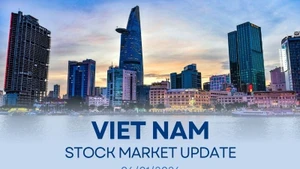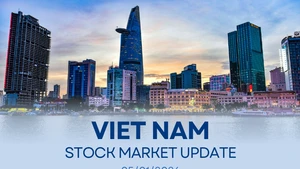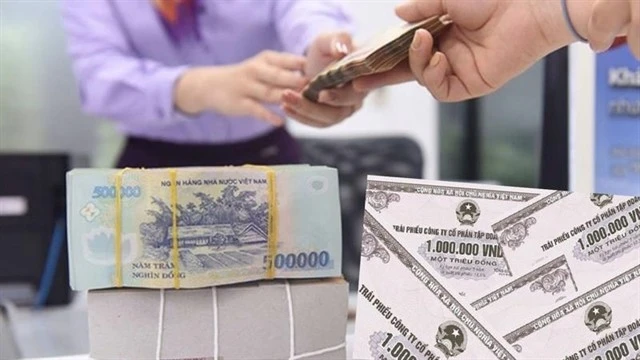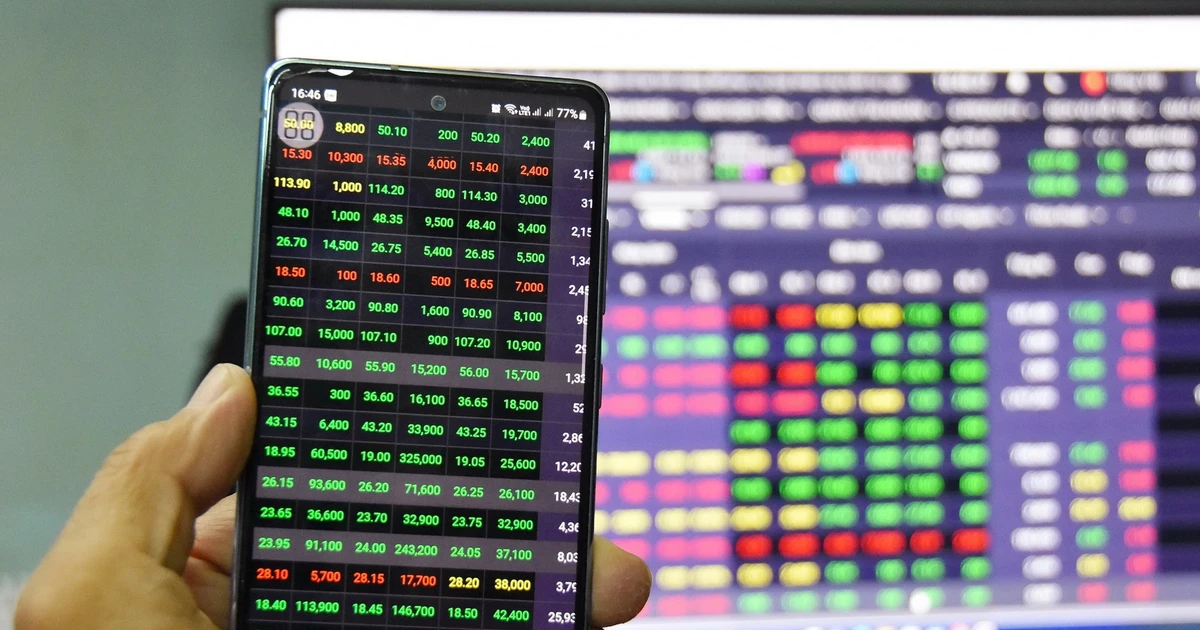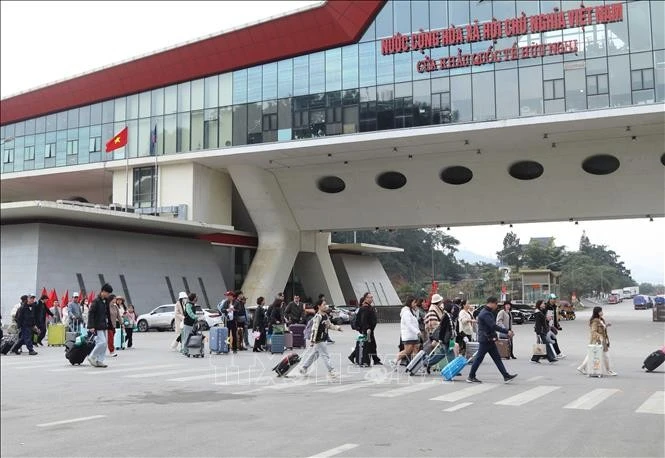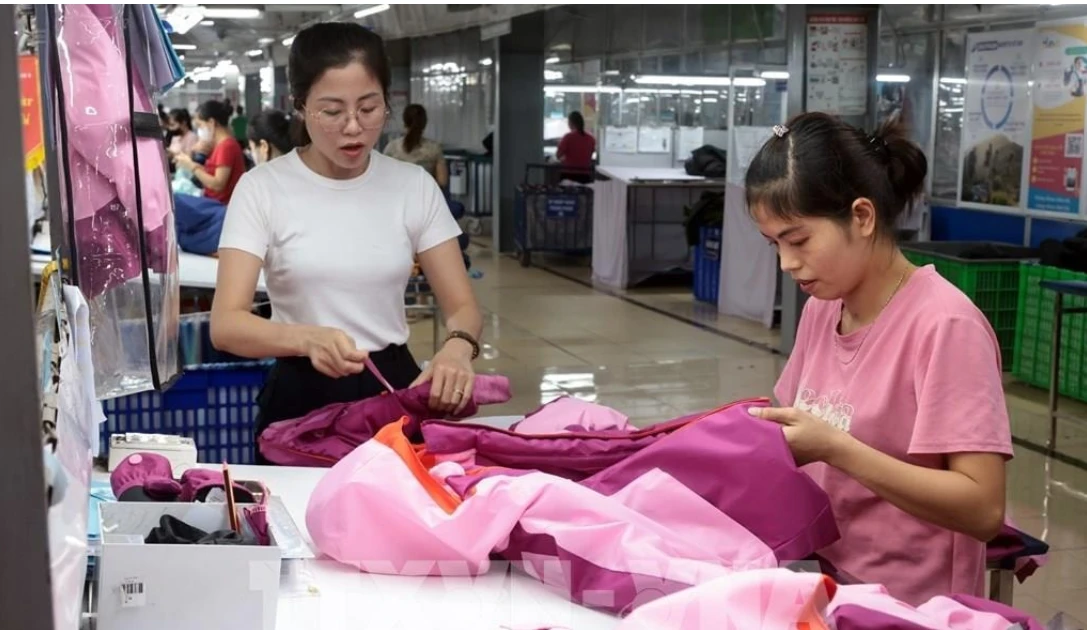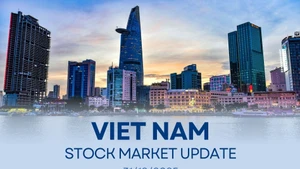Exports continued to be the primary driver of economic growth, reaching 219.8 billion USD in value, a year-on-year increase of 14.4%. According to Nguyen Thi Mai Hanh of the GSO under the Ministry of Finance, Viet Nam has effectively capitalised on free trade agreements (FTAs), expanded markets, and enhanced the value of its goods, all while international demand for Vietnamese products has remained steady.
Drivers of sustainable growth
Vietnamese businesses have maintained their growth momentum despite market fluctuations since the second half of 2024. The Viet Nam National Textile and Garment Group (Vinatex) reported estimated consolidated revenue of 9.035 trillion VND in the first half of the year, up 8% year-on-year, with consolidated profit reaching nearly 556 billion VND - 61% of the annual target and a 97% increase over the same period last year.
According to Le Tien Truong, Chairman of Vinatex, the 90-day delay in the US’ imposition of reciprocal tariffs created favourable conditions for the return of large orders. Contracts came with more reasonable prices and longer delivery timelines. The influx of new orders and expedited deliveries before the July 5 deadline helped drive profit growth.
Alongside exports, industrial production and construction have played significant roles in driving economic growth, with the added value of the industrial sector increasing by 8.07% year-on-year (8.79% in Q2 alone). The processing and manufacturing industries led the way, rising by 10.1% (10.75% in Q2), driven by strong performance in several key sectors.
Final consumption has also grown steadily over the past five years, thanks to stable household spending and a notable increase in government consumption. Tourism continues to grow robustly, both in terms of domestic and international travellers. Various tourism stimulus initiatives have been launched nationwide. In the first half of 2025, international arrivals rose by 20.7% year-on-year.
Accelerated disbursement of public investment into key infrastructure projects has not only boosted the construction and industrial sectors but also laid a solid foundation for long-term productive capacity. Foreign direct investment (FDI) has increased significantly, particularly in high-tech industries such as semiconductors and artificial intelligence, creating new production capacities, jobs, and opportunities for learning and management in the economy.
“Viet Nam’s GDP growth in the first half of the year reflects the synchronous recovery and development of all economic sectors, bolstered by stable macroeconomic policies, public and FDI investment flows, a rebound in domestic demand, and the effective leveraging of international economic integration. The balanced interplay of supply and demand has established a solid growth momentum for the Vietnamese economy,” assessed Nguyen Thi Mai Hanh Head of the National Accounts Department, General Statistics Office.
Only a necessary condition
Following the Q1 growth estimate and assessment of growth potential for the coming quarters, the GSO updated its growth scenario targeting 8% for the year (with Q1 at 6.93%, Q2 at 8.19%, H1 at 7.58%, Q3 at 8.27%, Q4 at 8.46%). The actual H1 GDP growth rate of 7.52%, nearly in line with the updated scenario, is expected to reduce pressure on the remaining quarters and provide a solid base for achieving the 2025 target.
However, Mai Hanh cautioned that this figure remains only a necessary condition for the 8% growth goal. Challenges persist in the second half of the year, including escalating geopolitical conflicts, which pose major risks to the global economy and could disrupt trade, investment, supply chains and commodity prices, all of which would have knock-on effects on Viet Nam’s production and exports.
International organisations such as the IMF and World Bank have revised down their global growth forecasts for 2025 due to persistent inflation and weakening consumer demand. These factors could hurt Vietnamese exports, particularly in key sectors like textiles, wood products, footwear, and electronics, all of which may face declining demand from major markets such as the US and EU.
In particular, the currency fluctuations could drive up import costs for raw materials and repayment of foreign currency loans. High global interest rates will also compel Viet Nam to adopt more cautious monetary policies, reducing room for easing. The US administration's planned reciprocal tariffs may put further pressure on Viet Nam’s manufacturing and export sectors in the coming months.
Domestically, although industrial production shows signs of recovery, the pace remains slow and uneven. Public investment disbursement continues to face bottlenecks due to delays in land clearance, overlapping legal procedures, and limited project execution capacity at local levels.
While domestic consumption is recovering, it remains fragile, with consumers adopting a more cautious spending approach amid inflation concerns. Although retail and service consumption have shown positive trends, they have yet to generate a broad-based boost for the overall economy.
Maximising growth potential
Regarding the growth outlook for the remaining quarters, the GSO believes public investment will be a key driver, with the Government, ministries and localities aiming for full disbursement of the 2025 capital plan. This will provide significant growth impetus, particularly through major national infrastructure projects such as expressways, airports, urban beltways and energy projects.
Science and technology, digital transformation and innovation are expected to play a strategic role. The rapid advancement of these sectors offers businesses opportunities to adopt artificial intelligence and other technologies to cut costs, improve productivity and enhance competitiveness.
The target of 16% credit growth, with appropriate adjustments based on actual economic conditions in 2025, is expected to significantly stimulate economic activity by providing ample capital for business, investment and consumption.
Consumer spending will also benefit from a 2% VAT reduction effective from July 1 for many goods and services, alongside various trade and consumption stimulus policies. Support packages under Decree 178 will help boost consumption, investment, and asset accumulation, thereby spurring economic growth.
At the regular June cabinet meeting, Prime Minister Pham Minh Chinh emphasised that in the face of a global economic slowdown, achieving an 8% growth rate in 2025 is a significant challenge, but a necessary one to lay the groundwork for Vietnam’s next breakthrough phase. To this end, he urged a 11–12% increase in total social investment compared to 2024 and the full disbursement of public investment capital within the year.
The PM also called for proactive and flexible responses to the US reciprocal tariff policy, viewing it as an opportunity to restructure and enhance the resilience of Viet Nam’s economy in alignment with deep, substantive global integration. The growth model must shift towards green, rapid, sustainable and circular development to enhance national competitiveness. The Ministry of Industry and Trade is tasked with making the most of Viet Nam’s 17 existing FTAs while accelerating negotiations for new agreements with promising markets in the Middle East, Africa, Latin America and Central Asia.



